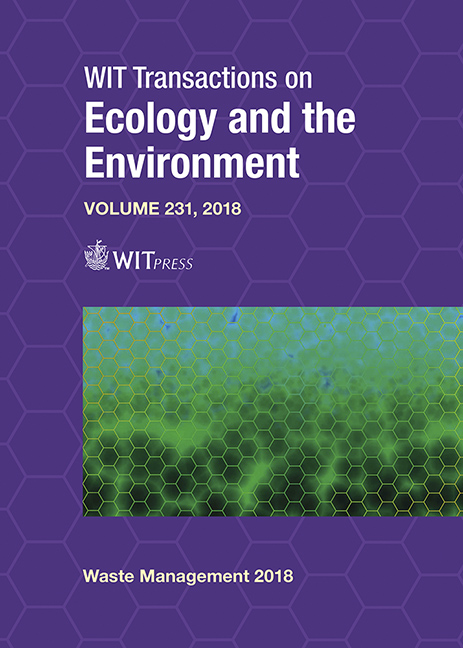FERMENTATION OF SACCHARIDES ISSUED FROM A DAIRY INDUSTRY BY A GENETICALLY MODIFIED STRAIN OF ESCHERICHIA COLI INTO ACETOIN AND 2,3-BUTANEDIOL
Price
Free (open access)
Transaction
Volume
231
Pages
9
Page Range
347 - 355
Published
2019
Paper DOI
10.2495/WM180321
Copyright
WIT Press
Author(s)
DAVID FERNÁNDEZ-GUTIERREZ, MARC VEILLETTE, ANTONIO AVALOS RAMIREZ, ANNE GIROIR-FENDLER, NATHALIE FAUCHEUX, MICHÈLE HEITZ
Abstract
Whey, which usually shows a high biological oxygen demand and a high chemical oxygen demand, should be treated before being rejected as waste water. The valorization of whey by chemical/physical treatments already exists. Some bioprocesses are also currently developed to transform whey into, for example, biogas. However, new performing green processes are still in development in order to obtain chemical products able to replace those issued from petroleum resources like acetoin (A) and 2,3-butanediol (2,3-BD), two important chemical platform molecules. The main objective of the present study was to evaluate the potential use of glucose, galactose and a lactose source derived from a dairy industry to produce A and 2,3-BD (ABD). The main issue of the natural producer bacteria of 2,3-BD such as Klebsiella pneumoniae or K. oxytoca during the fermentation of saccharides is their biosafety level since they are pathogen. In this way, non-pathogenic bacteria can be genetically modified to produce ABD from saccharides. In the present study, a genetically modified strain of Escherichia coli K12 MG1655 (non-pathogenic strain) was used. Two monosaccharides (glucose and galactose issued from lactose) at three concentrations (12.5, 25 and 50 g/L) were fermented using 0.5 L flasks for 120 h at 37°C, 1 atm, initial pH 7.4, 100 rpm and 10% (v/v) of inoculum in a synthetic culture medium (M9). All experiments showed that the fermentation of galactose was less efficient than the one of glucose (the ABD yields were around 25%, 40% and 35% lower compared to those obtained fermenting glucose at 12.5, 25 and 50 g/L at 96 h respectively). The highest ABD yield was 0.26 (g/g glucose), obtained at 96 h in the presence of 25 g/L of glucose. The ABD yields issued from glucose and galactose were compared with those derived from a dairy industry lactose.
Keywords
monosaccharide, glucose, galactose, lactose, whey, M9 culture medium, biovalorisation





